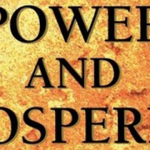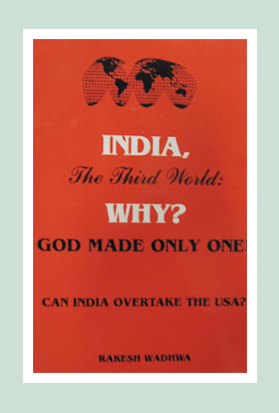
A Review of Mancur Olson’s Power and Prosperity
Renowned social scientist and economist Mancur Olson is best known for his treatise called The Logic of Collective Action. But, it is another work of his that also deserves attention. In Power and Prosperity, Olson deals with the oft repeated question – why does an economic divide persist between countries?
Equal Income Distribution – Characteristic of Free Economies?
The wealthiest countries are those that have free economies. There is a popular belief that the more capitalist economies in Europe, North America and even Asia (like Japan) have greater financial inequalities. But the true picture reflects a different scenario altogether. Such countries are better off than the socialist economies when it comes to distribution of wealth.
Communism
“The demise of communism has led to the realization that it never was, is no longer and will never be a viable economic system.”
The Communists of India and China
What is happening in Kolkata is enough to make Marx and Lenin turn in their graves. The Indian communists of West Bengal have given up their ideology and are going out of their way to attract capital – Indian and foreign.
Kolkata boasts of India’s largest Pizza Hut outlet, as well as highest selling Sony World franchisee. As if these symbols of capitalism were not enough of a reminder of a changed world, Manabendra Mukherjee, minister of IT, in the state’s communist government can look at Westside and Pantaloon malls on Camac Street from his office.
Bengal, a bastion of India’s communist rulers for 29 years, is witnessing a sea change. The communists remain in power but their philosophy could not be more different. They have embraced pro-market reforms with a vengeance – as if to make up for all their failed policies in double quick time.
Bengal’s government encouraged Pepsi to set up its potato processing plant in the state. Currently the company is doubling its 80 crore investment. The state has now become India’s second largest grower of potatoes. Dabur too has set up a fruit processing plant. Moreover, four companies from France have shown interest in investing in food processing. The communist Chief Minister, Buddhadeb Bhattacharya’s, avowed intention is to obtain investment and he doesn’t care whether it is Indian or foreign.
Though Bengal was always India’s top rice producer, it has now become No.1 in producing vegetables and pineapples as well. This has happened because, unlike in the erstwhile Soviet Russia, farms in Bengal are privately owned and whatever the tillers produce they keep.
No wonder Bengal has stunned India with its growth rates, and turnaround in industrial and agricultural development. In the last decade its economy grew by over 7% a year, while even Karnataka – the state which has Bangalore as its pride – could only manage a 6.4% yearly increase in its domestic product. Gujarat at 6.1%, and Haryana at 5.8% were way behind.
This growth has been led by Rs.27,000 crore of private industrial investment flowing into the state in the last 13 years. This investment was higher than in Maharastra, and second only to that in Gujarat.
The communists now woo private capital as if their lives depended on it. The investment in iron and steel projects is in hundreds of crores. Kolkata exports, from minister Mukherjee’s favourite IT complex, software and BPO services valued at Rs.1,400 crores. What is happening in India’s Bengal is no different than what is taking place in Lenin’s Russia and Mao’s China.
China, especially, exhibits capitalism. Its pro-market and pro-investment policies have gone far ahead of India’s in liberating businesses from red tape and controls. Where as India grew by 6.9% in 2004-05, the figure for China was 9.5%. If we account for what has happened since 1980, China is even further ahead. Its average annual growth of 9.5% exceeded India’s 5.7% by a whopping 3.8% every year.
This extraordinary growth in China has been due to its ability to convince investors to regard it as the ultimate opportunity for profits. While in 2001-03, China garnered in excess of 10% of the global foreign investment, India could not even get to the 1% mark.
China has become the world leader in exporting textiles. The success of its private entrepreneurs sends a chill down the spines of world’s competing businessmen. In 2004 alone China exported US$ 97 billion worth of textiles. India could only manage to send abroad textiles valued at US$ 14 billion.
Textiles are not the only success story. China’s manufacturers, across the board, are bedeviling the world with their newfound aggressiveness in closing deals. They are hungry for domination in the world markets and are leaving their competitors in the dust.
It is ironic the way China has jettisoned the teachings of Marx, Lenin, and Mao. Even more ironic, though, is how, in other countries including Nepal, communists still cling to their failed ideology. Let the Nepalese communist parties send their cadres to Bengal, China and Russia. Let them understand how these places, where communism originated, function. On their return, they just might influence their leaders into embracing capitalism, markets, reforms, and hence prosperity.
The Himalyan Times
When US Tried Communism…
I write this especially for our Maoist brothers. While the US is commonly vilified as the bastion of capitalism, it is little known that the US too has tried communism. It was only when communism failed that property rights and capitalism took hold.
Let us go back into history and see what lessons America learned from its relatively short dalliance with Maoism much before the ‘great leader’ himself was born.
The year was 1607. The first 104 settlers had arrived from Europe in Jamestown in the Virginia Tidewater region of the US in May. They found soil which was fertile beyond what they had seen in the lands which they had left. Fruits were abundant. Wild game such as deer and turkey were everywhere. There was no shortage of fish and other seafood. And yet within six months 66 of the original Jamestown, Virginia settlers had died. Only 38 survived.
Another 500 settlers were again sent to settle in Virginia in 1609 and within six months 440 of these too died by starvation and disease. This was called ‘starving time’ and one eyewitness described it in English of those times, ‘So great was our famine, that a Savage we slew and buried, the poorer sorte took him up againe and eat him; and so did divers one another boyled and stewed with roots and herbs.’
How could this be? How could there be such death and starvation amidst so much plenty of meat, fruits, and fish. The fault as the witness said lay not in the ‘barrenness and defect of the Countrie’ but in the ‘want of providence, industry and government’.
What caused this lack of ‘industrie’? Were the Virginian settlers lazy and indolent? It could not be. People who were sent there were the chosen ones – the very best of men.
The problem was that all the men who were sent were bonded labourers. They had no stake in what they produced. They were bound by contract to put all they produced into a common pool to be used to support their colony as a whole. This was communism in its purest form. Everyone was supposed to work according to ability and take according to need.
As so frequently happens with present day government policies, the results were the opposite of what was intended. Since hard work was not personally beneficial for the settlers they responded by stopping work.
Phillip A. Bruce, a late 19th century US historian, wrote of the Jamestown immigrants, “The settlers did not have even a modified interest in the soil … . Everything produced by them went into the store, in which they had no proprietorship.” The result as Bruce wrote would be what anyone who has any knowledge of human nature would expect, men, even the most energetic, refused to work.
This is what happened in Mao’s China and in Soviet Russia on a grand scale. In America a few hundred deaths stopped the communist experiment, in China and Russia, millions had to die before these nations abandoned the principles of Marx, Lenin, and Mao.
Jamestown changed course just two years later in 1611 with arrival of the ‘high marshall’ Sir Thomas Dale from the UK. He understood the problem, freed the settlers by abrogating communal ownership. Each man received three acres of land and, other than a lump sum tax of 2 ½ barrels of corn, did not have to contribute anything to the common pool. The colony immediately began to prosper. It prospered because each individual directly benefited by his labour and knew that he would also bear the full consequences of any reduction in output. Private ownership and capitalism worked.
Communism doesn’t work because it destroys the reward and work nexus. Communism doesn’t work because the absence of property rights heralds the end of all incentive to produce. Communism doesn’t work because humans do no wish to sacrifice themselves to the common good.
I do not know or care about the political philosophy of the Maoists. I would, though, like to know what their economic policies are going to be. Do they want to take back Nepal to what America experimented with almost 400 years ago? Nepal lags behind the US in economic development, but is it to be put back by four centuries?
The Himalyan Times
 Rakesh Wadhwa. Ever since, I was a school boy, I knew India was on the wrong path. Socialism was just not what we needed to get ahead. Government controlled our travel; government controlled our ability to buy and sell; and government controlled our freedom to move our money. My life has focused on the inherent rights people have. When I was in college, I never understood, what the governments meant by their "socialistic attitude". If people are free to buy, sell and move their capital themselves without any restrictions by state, then the welfare of people is inevitable & hence the countries they live in will become wealthy. The government has no right whatsoever, to point a finger at me or my business. I am not a revolutionary. I just want to light up my cigarette and not get nagged about it. I believe in non-interfering attitude to attain more.
Rakesh Wadhwa. Ever since, I was a school boy, I knew India was on the wrong path. Socialism was just not what we needed to get ahead. Government controlled our travel; government controlled our ability to buy and sell; and government controlled our freedom to move our money. My life has focused on the inherent rights people have. When I was in college, I never understood, what the governments meant by their "socialistic attitude". If people are free to buy, sell and move their capital themselves without any restrictions by state, then the welfare of people is inevitable & hence the countries they live in will become wealthy. The government has no right whatsoever, to point a finger at me or my business. I am not a revolutionary. I just want to light up my cigarette and not get nagged about it. I believe in non-interfering attitude to attain more. 
 The Bastiat Award is a journalism award, given annually by the International Policy Network, London. Bastiat Prize entries are judged on intellectual content, the persuasiveness of the language used and the type of publication in which they appear. Rakesh Wadhwa won the 3rd prize (a cash award of $1,000 and a candlestick), in 2006.
The Bastiat Award is a journalism award, given annually by the International Policy Network, London. Bastiat Prize entries are judged on intellectual content, the persuasiveness of the language used and the type of publication in which they appear. Rakesh Wadhwa won the 3rd prize (a cash award of $1,000 and a candlestick), in 2006.
What the readers are saying…